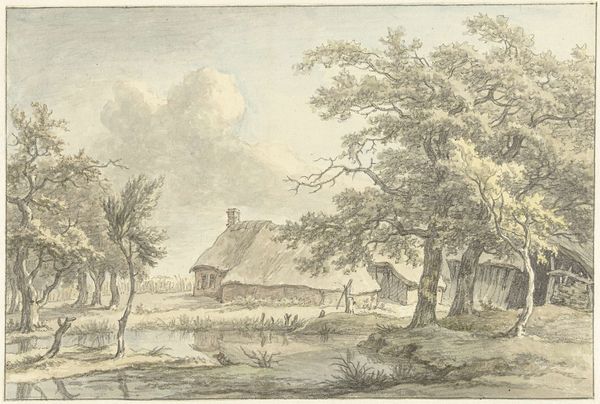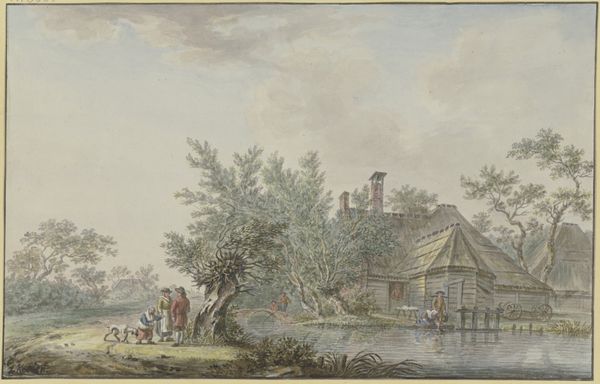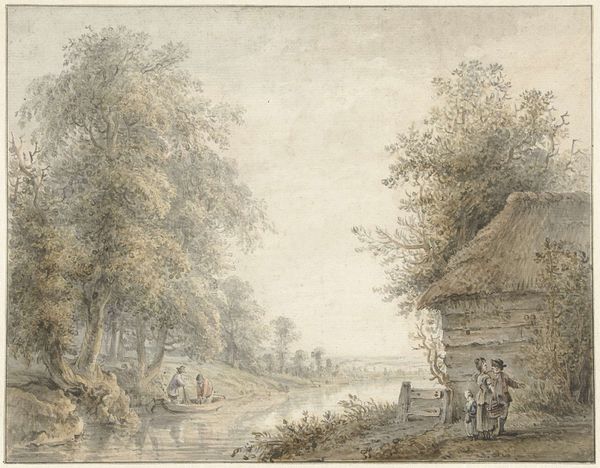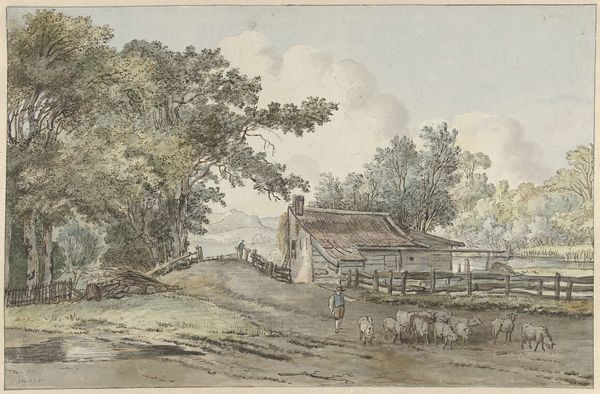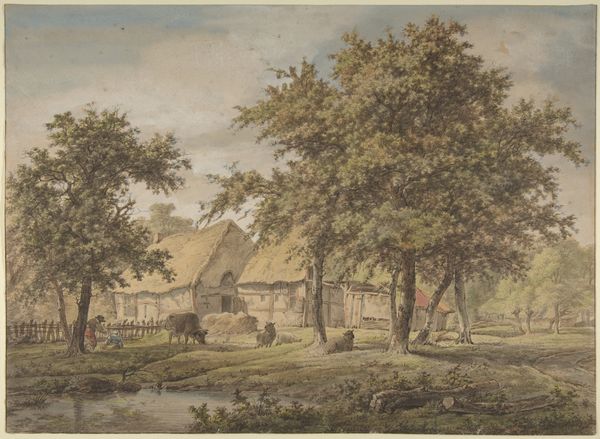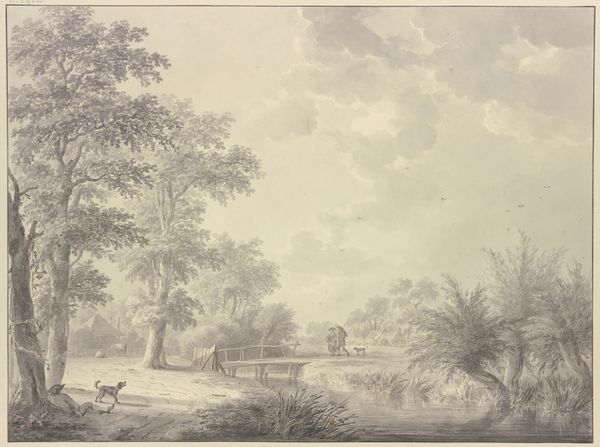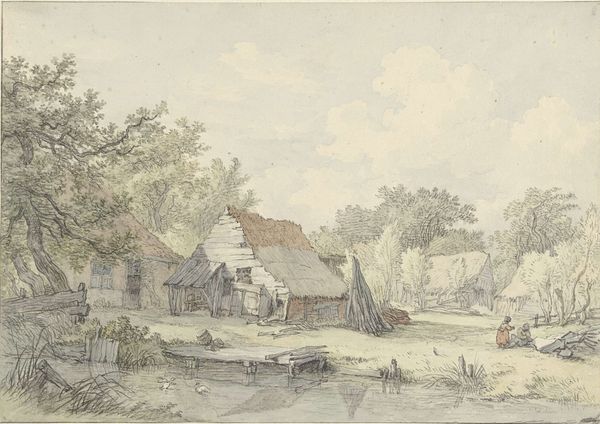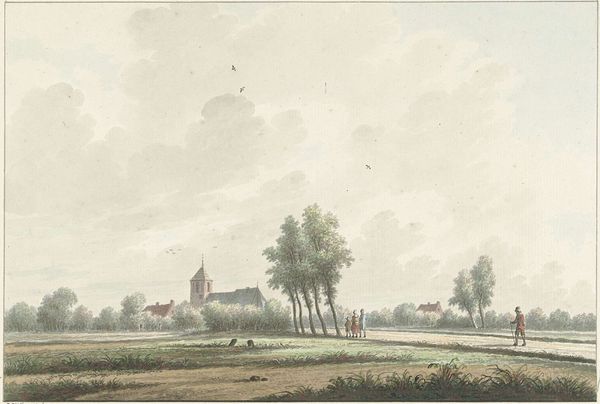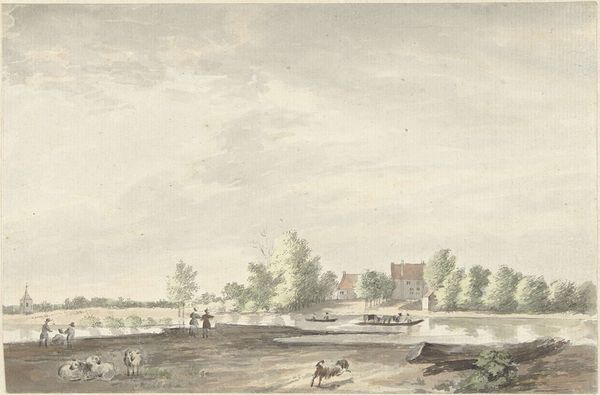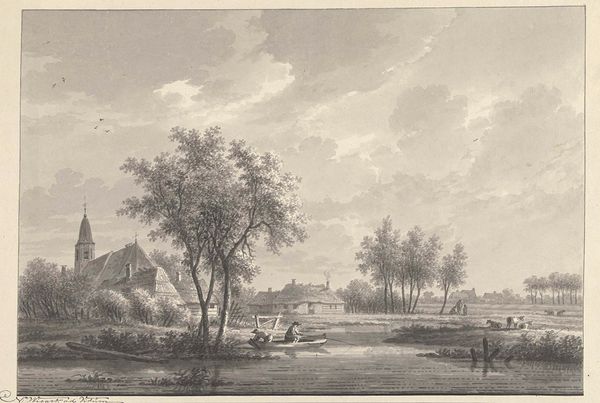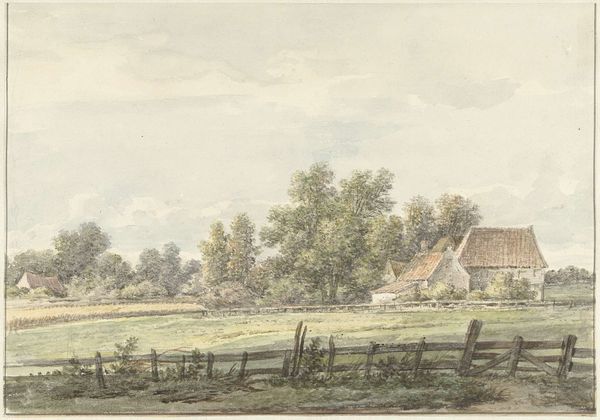
drawing, paper, ink, chalk
#
drawing
#
dutch-golden-age
#
landscape
#
paper
#
ink
#
chalk
#
genre-painting
#
realism
Dimensions: height 268 mm, width 389 mm
Copyright: Rijks Museum: Open Domain
Curator: Let's spend a few moments with "Lime Kilns near Hillegom," a work on paper from 1765 by Gerard van Rossum, rendered in chalk and ink. Editor: You know, I'm immediately struck by the stillness of it all. It's almost dreamlike. The muted colors, the gentle reflections in the water... a perfectly peaceful day frozen in time. Curator: Indeed. It presents a slice of life embedded within the burgeoning capitalist structures of 18th-century Holland. Note how Van Rossum integrates industry, these kilns, with genre scenes: we see figures fishing, conversing, simply existing alongside the means of production. This wasn’t just about pretty landscapes, it was also about showing labor. Editor: Production! Ah, you’ve stolen my romanticism. But in truth, there is something subtly powerful in the presence of those lime kilns, these silent, imposing forms overseeing the little vignettes of daily life. I keep looking at that dog sitting beside the figure in fancy attire - such quiet judgment! Curator: It also invites us to think about land use and social hierarchy. Who owns that land? Who benefits from the labor happening here? These visual cues embedded in genre paintings spoke volumes about the socio-economic realities of the Dutch Golden Age and the shift towards industrial landscapes. The choice to feature these “everyday” workers elevated their stories into the pictorial narratives of the time. Editor: I suppose what feels romantic to me is also rooted in that era, in this longing for simple scenes and ways of being, however skewed that was based on power. And the fact that it is a drawing too – not some grand oil painting - lends itself to this almost secret viewing of ordinary lives. I keep thinking about where they would buy clothes... Curator: Ultimately, Van Rossum’s rendering offers us not just a serene image but a moment to consider how economic activities intertwine with our social fabrics and how they’re reflected and perpetuated in visual culture. It encourages questioning around the relationships that make a society and the individual position in the power structures of its time. Editor: It really does sneak up on you, doesn’t it? A quiet drawing hinting at clamoring changes. Curator: Precisely, now I won’t think about the peaceful day without a touch of revolutionary undertone.
Comments
No comments
Be the first to comment and join the conversation on the ultimate creative platform.

